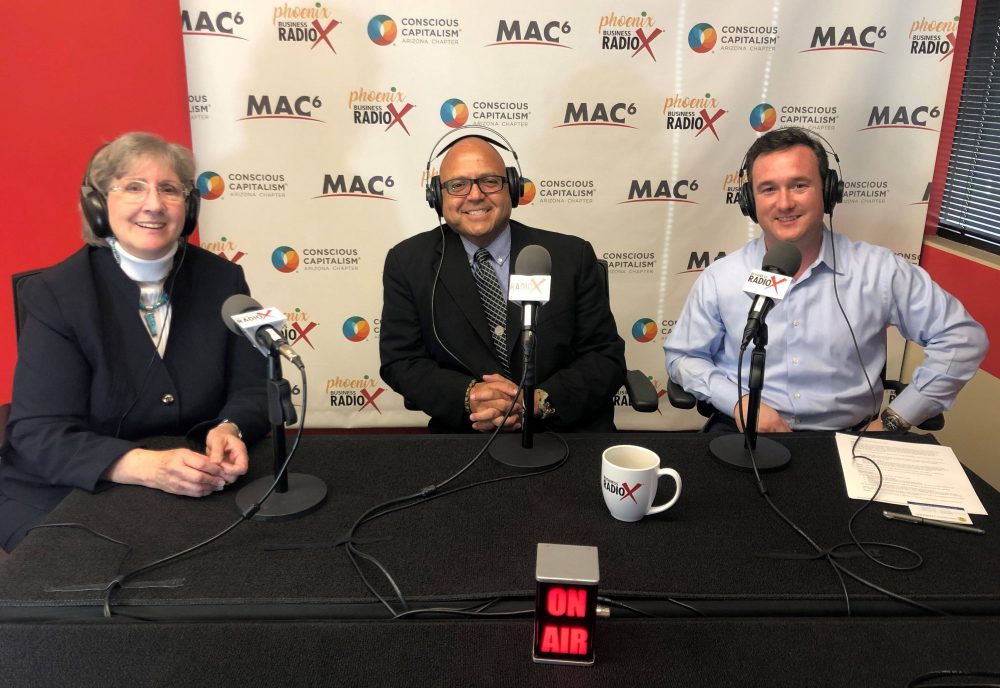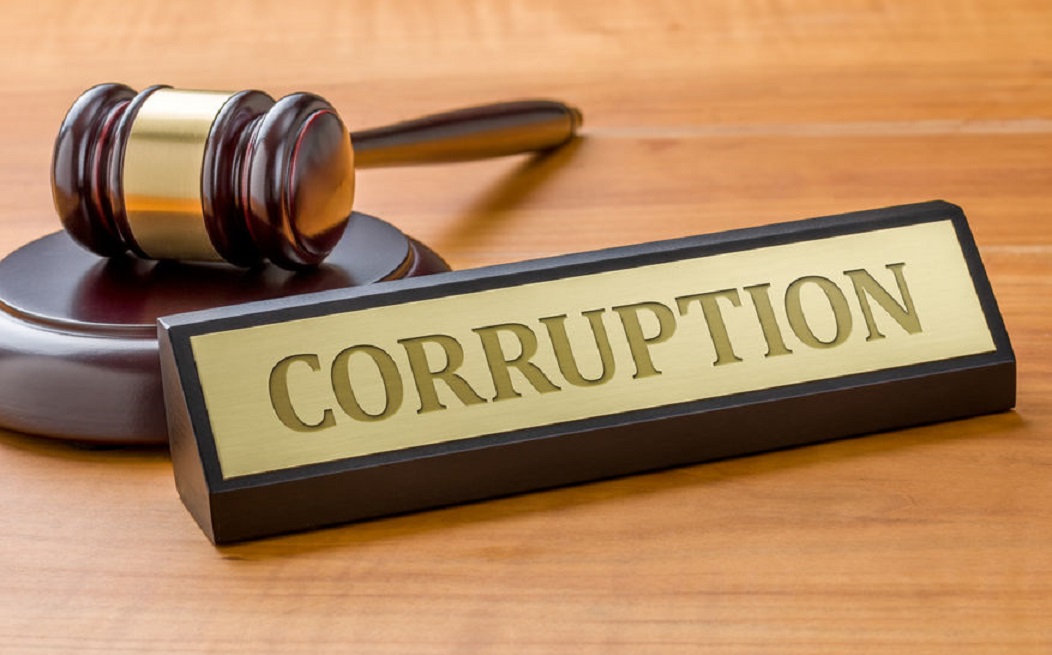Blogs
This Man Got $221,000 Of Student Loans Discharged In Bankruptcy
Zack FriedmanSenior Contributor Personal Finance
Author, The Lemonade Life. I write about leadership and greatness.
 GettyGETTY
GettyGETTY
Can you now discharge your student loans in bankruptcy?Here’s what you need to know.Student Loans: BankruptcyA Navy veteran will have $220,000 of his student loans discharged, even though he is not unemployable, not disabled or wasn’t defrauded. A U.S. bankruptcy judge in New York, Cecilia G. Morris, ruled that Kevin J. Rosenberg will not have to repay his student loan debt because it will impose an undue financial hardship.According the Wall Street Journal, Rosenberg borrowed $116,500 of student loans between 1993 and 2004 to earn a bachelor’s degree from the University of Arizona and a law degree from Cardozo Law School at Yeshiva University. He filed for Chapter 7 bankruptcy in 2018 and asked the court last June to discharge his student loan debt, which had grown to $221,400, including interest. At the time of filing, Rosenberg’s annual salary was $37,600, and after living and debt expenses, his monthly net loss was $1,500.Traditionally, unlike mortgages or credit card debt, student loans cannot be discharged in bankruptcy. There are exceptions, however, namely if certain conditions regarding financial hardship are met.Today In: MoneyThe Brunner Test: Financial HardshipThose conditions are reflected in the Brunner test, which is the legal test in all circuit courts, except the 8th circuit and 1st circuit. The 8th circuit uses a totality of circumstances, which is similar to Brunner, while the 1st circuit has yet to declare a standard.PROMOTEDIn plain English, the Brunner standard says:
- the borrower has extenuating circumstances creating a hardship;
- those circumstances are likely to continue for a term of the loan; and
- the borrower has made good faith attempts to repay the loan. (The borrower does not actually have to make payments, but merely attempt to make payments - such as try to find a workable payment plan.)
There are variances across federal districts, but that’s the basic framework. To discharge student loans through bankruptcy, an Adversary Proceeding (a lawsuit within bankruptcy court) must be filed, where a debtor claims that paying the student loan would create an undue hardship for the debtor.So, Can You Now Discharge Student Loans In Bankruptcy?This is only one legal ruling. That said, federal judges and Democrat and Republican members of Congress are open to changing the law to make it easier for borrowers to discharge their student loans in bankruptcy. While these tactics may be welcomed by some student loan borrowers, critics may question whether judges should actively try to circumvent the existing law (suggesting that Congress, and not judges, should make the law).
From: cnbc.com
By: Sarah O'Brien
https://www.cnbc.com/2020/01/07/bankruptcy-would-be-easier-option-for-consumers-under-warren-plan.html
Why student loan debt is ballooning for those 50 and upFrom: USAToday.comBy: Susan Tompor Detroit Free Presshttps://www.usatoday.com/story/money/2019/12/29/retirees-student-loans-debt/2769065001/
Student Loans & Bankruptcy – Interview with Diane Drain and Bobby Zavala
![]() Download the audio
Download the audio
LAWGITIMATE Attorney Diane Drain and Bobby Zavala with University of Dubuque
 Diane Drain established her law firm in 1991 in order to provide education for those facing financial troubles. She believes that basic legal advice should be free and her commitment is to help her clients get their lives back on track. Her greatest reward is helping a family to establish credit so they can purchase a vehicle or home.
Diane Drain established her law firm in 1991 in order to provide education for those facing financial troubles. She believes that basic legal advice should be free and her commitment is to help her clients get their lives back on track. Her greatest reward is helping a family to establish credit so they can purchase a vehicle or home.
Diane loves her work. As a well known Phoenix bankruptcy attorney, she truly believes that “when you find your passion, going to work every day is a joy, not a job.” Her clients and fellow lawyers can attest to her passion and commitment to excellence. She practices only the areas of bankruptcy and foreclosure laws.For many years our clients and fellow lawyers rate my work as the highest possible.
Diane is a retired professor of law and taught bankruptcy since 1990 to both law students and the general public. Diane’s clients and peers have given her the highest possible rating in both legal ability and ethical standards. 
Diane’s code: to quote Abraham Lincoln: “Discourage litigation. Persuade your neighbors to compromise whenever you can. Point out to them how the nominal winner is often a real loser – in fees, expenses, and waste of time. As a peacemaker the lawyer has a superior opportunity of being a good man. There will still be business enough.” “The Collected Works of Abraham Lincoln edited by Roy P. Basler, Volume II, Notes for a Law Lecture, July 1, 1985, p. 81” ]
Connect with Diane on LinkedIn, Facebook and Twitter.
Bobby Zavala with University of Dubuque The University of Dubuque is a private university offering undergraduate, graduate, and theological seminary degrees, and other educational opportunities with the intention of educating and forming the whole person. The university is comprised of individuals from the region, our nation, and the world.
The LIFE advantage: The University of Dubuque designed the Learning Institute for Fulfillment and Engagement specifically for adult learners. LIFES’s accelerated degree program and services–available during the hours you need them–help you balance your family life, your career, and your studies.
The University of Dubuque (UD) LIFE Adult Learning Program offers a Bachelor’s Degree in Human Resources, Marketing, Health Care Administration, Accounting, and Criminal Justice. UD also offers a Master’s Degree in Business Administration (MBA). Convenient scheduling: Classes are Monday -Thursday; Classes are face to face; Classes are from 6PM-9PM; Students take one class per session; Students can attend nine sessions per year; Sessions are five weeks in length; Childcare will be provided for children of students enrolled in the LIFE accelerated degree program.
 An Arizona native, Senior Director Bobby Zavala has over 20 years of Active Military Service and 10 years Law Enforcement experience. He is a Deputy Sheriff with the Cochise County Sheriff’s Office. During his tenure with the Cochise County Sheriff’s Office he was a General Instructor, Physical Fitness Instructor, RADAR Instructor, Team Leader for the Accident Investigation Team, and a Field Training officer. He culminated his previous ten years as a Tactical Flight Officer and the Training Officer for the Aviation Support Unit “Geronimo”. He is still a Certified Arizona Peace Officer and remains on Reserve status with Cochise County.
An Arizona native, Senior Director Bobby Zavala has over 20 years of Active Military Service and 10 years Law Enforcement experience. He is a Deputy Sheriff with the Cochise County Sheriff’s Office. During his tenure with the Cochise County Sheriff’s Office he was a General Instructor, Physical Fitness Instructor, RADAR Instructor, Team Leader for the Accident Investigation Team, and a Field Training officer. He culminated his previous ten years as a Tactical Flight Officer and the Training Officer for the Aviation Support Unit “Geronimo”. He is still a Certified Arizona Peace Officer and remains on Reserve status with Cochise County.
He is active in the Phoenix area with many Civil Rights and Veteran groups. He is currently the Deputy Director of District 1 (LULAC), League of United Latin American Citizens, LULAC State Deputy Director of Elderly Affairs, Chair of the Tempe Military Affairs Committee (MAC), member of the Tempe Diplomats, a Life member of the Veterans of Foreign Wars (VFW) and a member of the American Legion. Senior Director Bobby Zavala holds a Bachelor of Science Degree from Wayland Baptist University and is in pursuit of a Master’s Degree in Criminal Justice.
Bobby is married, lives in Maricopa and enjoys reading, long distance running, spending time with his family.
Follow the University of Dubuque on LinkedIn and Facebook.
Special Guest Host
 Mike Poulton, with Poulton & Noroian, was born in North Carolina, and has lived in Nebraska, Kansas, Vermont and Arizona throughout his life. Mike earned a Bachelor’s Degree in Construction Management with minors in Physics and Business from the University of Nebraska – Lincoln. As an undergraduate, he worked as a physics research assistant in the Polarized Electron Group at UNL, designing and building scientific apparatus in support of a national nuclear physics research project. Prior to his career in law he was a project engineer and field superintendent for an international commercial contractor, helping manage large office and retail construction projects in Phoenix.
Mike Poulton, with Poulton & Noroian, was born in North Carolina, and has lived in Nebraska, Kansas, Vermont and Arizona throughout his life. Mike earned a Bachelor’s Degree in Construction Management with minors in Physics and Business from the University of Nebraska – Lincoln. As an undergraduate, he worked as a physics research assistant in the Polarized Electron Group at UNL, designing and building scientific apparatus in support of a national nuclear physics research project. Prior to his career in law he was a project engineer and field superintendent for an international commercial contractor, helping manage large office and retail construction projects in Phoenix.
Mike attended the Sandra Day O’Connor School of Law at Arizona State University, where he was awarded the Charles E. Jones Merit Scholarship and was named a Scholar at the Center for the Study of Law, Science and Technology. He won the Moot Court Oral Argument Competition and was an editor of Jurimetrics, the academic journal of the American Bar Association’s division of Law Science and Technology. His published article “Particles of What? A Call for Specificity in Airborne Particulate Regulation” won Best Student Note, and was a nominated for the American Society of Legal Writers Law-Review Award Competition.
Mike’s legal practice draws on his knowledge and experience in other fields to serve his clients. As an experienced science researcher, Mike understands technical issues that many other attorneys cannot, and applies that knowledge for his clients’ benefit. His construction management experience also provides him with a broad knowledge base not only in construction law, but also in regulatory compliance, worker safety, and negotiation.
In addition to law, Mike has a passion for hands-on work with technological hardware and has a number of projects he is actively pursuing at any time – presently including an attempt at the world speed record for a hovercraft. He is a professional pyrotechnician who frequently produces public fireworks displays on the Fourth of July and other holidays. He has worked on the crew of many electronically fired shows in Kansas, Nebraska, Ohio, Vermont, and Arizona and has set up explosive special effects at airshows around the country. Mike has been active in canine search and rescue to find lost and missing people in the wilderness of Arizona, is a ham radio operator, a gun collector, amateur watchmaker, and enjoys camping in the mountains of Prescott, Arizona.
Michael is licensed to practice law in Arizona and is admitted to practice before the U.S. Federal District Courts in Arizona.
Connect with Mike on LinkedIn.
About This Show 
Lawgitimate and its awesome guests highlight everyday financial topics including credit scores, debt management, small business, and real estate.
Lawgitimate’s goal is to raise awareness and provide the full perspective, including the legal lens attorneys use to address these complicated and fun topics.
About Your Host
 Rochelle Poulton is an attorney and owner of AZCLG. Rochelle has been helping people with Credit and Debt issues since 2012, owns several small businesses, and has nearly 20 years of real estate experience.
Rochelle Poulton is an attorney and owner of AZCLG. Rochelle has been helping people with Credit and Debt issues since 2012, owns several small businesses, and has nearly 20 years of real estate experience.
Rochelle created Lawgitimate to bring in a network of awesome people to raise awareness and educate people about the litany of legal issues she faces everyday at AZCLG.
The post Student Loans & Bankruptcy – Interview with Diane Drain and Bobby Zavala appeared first on Diane L. Drain - Phoenix Arizona Bankruptcy & Foreclosure Attorney.
Broken Promises: Bankruptcy is advertised as the solution to financial problems.
Bad, lazy or greedy attorneys fail to warn clients about the problems they could face in bankruptcy.

People in financial distress look to attorneys for help and guidance. They assume their attorneys care more about them than about the attorney’s bank account. An attorney is ethically required to have the skill and knowledge in order to offer good advice to their clients. Attorneys are not supposed to take more clients than they can efficiently and professionally assist. Law firms that mass-produce bankruptcies are treating their clients like cattle – herding them into a holding pen for slaughter, with little regard about the legal consequences to those clients (losing their home, tax refunds or inheritance, to name a few problems).
The United States Trustee, the trustees, and their attorneys
The United States Trustee is aware that lawyers and law firms are mistreating their clients, but with few exceptions, they fail to take action to curb the abuses (at least where I practice). Some Bankruptcy Trustees and their attorneys view the debtors as walking cash registers. They keep cases open that should be closed, they collect funds for themselves that should be used pay taxes, the sins go on and on.
“A Bankruptcy Christmas”
For a very insightful expose’ on how bad this process has become – watch Stephen Berken‘s YouTube presentation “A Bankruptcy Christmas“. He is not afraid to call a turd a turd.
MUSINGS FROM DIANE:
 The bankruptcy system was designed to help individuals and businesses get a fresh start. That fresh start comes in many flavors – depending on the debtors and their goals. Unfortunately, the process has become so corrupt that some trustee’s attorneys regularly earn approximately ONE MILLION DOLLARS a year (much of that money is from debtors who did not have attorneys or whose attorney abandoned them). The only conclusion is that the process is broken.
The bankruptcy system was designed to help individuals and businesses get a fresh start. That fresh start comes in many flavors – depending on the debtors and their goals. Unfortunately, the process has become so corrupt that some trustee’s attorneys regularly earn approximately ONE MILLION DOLLARS a year (much of that money is from debtors who did not have attorneys or whose attorney abandoned them). The only conclusion is that the process is broken.
A good debtor’s attorney should look out for their client, that includes helping their client avoid obvious problems. The system should not rely on the debtor’s attorney to bring an action against a bad attorney who is abusing their own clients. But, in 2019 that was dropped in my lap. The chapter 13 trustee and US Trustee said they just “thought this young attorney was sloppy”. I had to take months of my time to bring the spot light on the bad attorney. Others started to pay attention once I exposed the terrors this attorney suffered on his clients, but why did I have to do their job (they get paid for this type of work, I don’t).
Sorry for the whining :-(
How Can I Help You?
The post Debtors Abused by the Bankruptcy System appeared first on Diane L. Drain - Phoenix Arizona Bankruptcy & Foreclosure Attorney.
This final piece of
Wynn at Law, LLC’s short Estate Planning series looks at how you can
express your wishes when you’re still alive but might not be able to
communicate. Injuries and illnesses are facts of aging. Our first
article in the series mentioned that fewer than one in three
Americans have a Living Will. Even fewer have a Power of Attorney.
First, a bit about the
difference between the two tools before we get into the types of
Powers of Attorney – or POAs. Both come into play when you are not
able to express your wishes. A Living Will identifies your wishes in
the event of very specific health care situations. While a Health
Care Power of Attorney allows someone else to make your wishes known
on their behalf and make decisions in your best interests. Generally,
a Health Care Power of Attorney grants broad authority to your agent
to act on your behalf, whereas a Living Will gives specific direction
in the event of a defined health situation. Does it hurt to have
both a Living Will and a POA? That is a great question for your
Estate Planning Lawyer (a case-by-case answer you cannot get online),
but in general, no.
Two Powers of
Attorney
The ability to have
someone act on your behalf via a POA can be limited, rather than just
giving your designee – or agent – act unilaterally for you. The
POA is usually viewed as either a Health Care POA or Financial POA.
Health Care POA:
This document gives an individual the power to make medical decisions
for you if you become incapacitated. These decisions can include
institutional admission, life support, or surgery.
Financial POA: This
document designates an agent to manage your finances if you become
incapacitated or are unable to make informed decisions for yourself.
This is also important if a person can still make decisions, but
cannot speak or physically sign his or her name. Rather than adding
an agent as a co-owner of an account, exposing that account to the
agent’s debts, a POA allows them to sign checks you direct them to
sign.
The stats favor
using a POA
Not many Wynn at Law,
LLC clients will legitimately say they enjoy the reality of Estate
Planning. You are, after all, planning for the end of life. Your
life. It’s potentially a warm, caring topic that gets overshadowed by
morbid stigma about death and dying. The disability part of the
conversation is even more difficult because, by nature, we don’t want
to think about being alive but incapable of acting for ourselves.
The statistics say we
need to pay more attention to POAs. The Administration on Aging’s
2018 Profile of Older Americans concluded that 62 percent of
adults over 65 had two or more chronic conditions. And it isn’t just
a concern to wise up to once you retire. More than one in four of
today’s 20-year-olds can expect to be disabled before they reach
retirement according to the Social Security Administration. An
expertly drafted POA can help prevent incapacitation from turning
into an emotional and financial family tragedy.
The post Your Estate Planning Toolbox: Powers of Attorney appeared first on Wynn at Law, LLC.
This final piece of
Wynn at Law, LLC’s short Estate Planning series looks at how you can
express your wishes when you’re still alive but might not be able to
communicate. Injuries and illnesses are facts of aging. Our first
article in the series mentioned that fewer than one in three
Americans have a Living Will. Even fewer have a Power of Attorney.
First, a bit about the
difference between the two tools before we get into the types of
Powers of Attorney – or POAs. Both come into play when you are not
able to express your wishes. A Living Will identifies your wishes in
the event of very specific health care situations. While a Health
Care Power of Attorney allows someone else to make your wishes known
on their behalf and make decisions in your best interests. Generally,
a Health Care Power of Attorney grants broad authority to your agent
to act on your behalf, whereas a Living Will gives specific direction
in the event of a defined health situation. Does it hurt to have
both a Living Will and a POA? That is a great question for your
Estate Planning Lawyer (a case-by-case answer you cannot get online),
but in general, no.
Two Powers of
Attorney
The ability to have
someone act on your behalf via a POA can be limited, rather than just
giving your designee – or agent – act unilaterally for you. The
POA is usually viewed as either a Health Care POA or Financial POA.
Health Care POA:
This document gives an individual the power to make medical decisions
for you if you become incapacitated. These decisions can include
institutional admission, life support, or surgery.
Financial POA: This
document designates an agent to manage your finances if you become
incapacitated or are unable to make informed decisions for yourself.
This is also important if a person can still make decisions, but
cannot speak or physically sign his or her name. Rather than adding
an agent as a co-owner of an account, exposing that account to the
agent’s debts, a POA allows them to sign checks you direct them to
sign.
The stats favor
using a POA
Not many Wynn at Law,
LLC clients will legitimately say they enjoy the reality of Estate
Planning. You are, after all, planning for the end of life. Your
life. It’s potentially a warm, caring topic that gets overshadowed by
morbid stigma about death and dying. The disability part of the
conversation is even more difficult because, by nature, we don’t want
to think about being alive but incapable of acting for ourselves.
The statistics say we
need to pay more attention to POAs. The Administration on Aging’s
2018 Profile of Older Americans concluded that 62 percent of
adults over 65 had two or more chronic conditions. And it isn’t just
a concern to wise up to once you retire. More than one in four of
today’s 20-year-olds can expect to be disabled before they reach
retirement according to the Social Security Administration. An
expertly drafted POA can help prevent incapacitation from turning
into an emotional and financial family tragedy.
The post Your Estate Planning Toolbox: Powers of Attorney appeared first on Wynn at Law, LLC.
Many clients have contacted us regarding the discharge of taxes in bankruptcy,
offers in compromise and installment agreements with IRS and recently penalties
assessed by IRS.
The IRS offers 3 types of penalty relief:
1. Reasonable Cause-this appears to be our best chance to abate penalties
2. Administrative Waiver and First Time Penalty Abatement
3. Statutory Exception for example a taxpayer got bad advice from IRS
Reasonable cause is relief we may grant when a taxpayer exercises ordinary business care and prudence in determining
their tax obligations but is unable to comply with those obligations due to circumstances beyond their control.
Reasonable Cause is based on all the facts and circumstances in your situation.
The IRS will consider any reason which establishes that you used all ordinary business care and prudence to meet your
Federal tax obligations but were nevertheless unable to do so.
Typical fact patterns involving reasonable cause for failure to file a tax return, make a deposit, or pay tax when due include:
1. Fire, casualty, natural disaster or other disturbances
2. Inability to obtain records
3. Death, serious illness, incapacitation or unavoidable absence of the taxpayer or a member of the taxpayer’s immediate family
Jim Shenwick, Esq. has an LLM in Taxation from New York University Law School
The Last Will and Testament and other forms of the Will were covered in our most recent Wynn at Law, LLC, article. Often going alongside a Will is one or more trusts. A revocable living trust is the tool in the Estate Planning Toolbox for holding and distributing a person’s assets to avoid probate. In its simplest definition, the Trust is an entity separate from you that allows you pass assets anyone designated in the trust.
First, a word about
probate. Probate is a court process that oversees the administion
and distribution of the assets of a deceased person. As part of the
process, the court system validates a person’s Last Will and
Testament, if they have one. While the probate process is not
“scary,” it can eat up a lot of time and money. That is all the
more reason to turn to an experienced Estate Planning attorney for
help in how to avoid that unnecessary cost and delay.
A Trust skips the
probate process
How does a Trust skip
the probate process? A Trust is an entity separate from you that
holds your assets while your alive and sets forth how you want your
assets handled after your passing. Since a Trust is a separate entity
from personally, when you pass away your Trust continues. Since a
Trust cannot “pass away” anything titled in the name of the Trust
would not be subject to the probate process. Properly titling assets
in the name of a Trust, often referred to as “funding,” avoids
probate on those assets. This is why an experienced attorney will
talk you through the process of retitling assets into your Trust.
Listing assets,
changing titles
After the Trust is set
up, the Trust ‘owns’ the property. A Trust is only worth the assets
that are titled into it. This is the step that trips up many who
don’t use an attorney for the trust. For many things – jewelry or
collections as examples – the trust simply lists the assets in
detail. Real estate is a bit different in that the deed or title (see
related article) has to be changed to list the trust as the actual
owner of the property. This isn’t complicated. Still, when this step
is overlooked, your assets could end up in probate.
Avoid double
counting and under counting
Your retirement plans
and insurance policies already have beneficiaries. This money doesn’t
end up in probate, but the assets also don’t flow into a trust,
unless you’ve set the trust as the beneficiary. That tactic can seem
confusing, but it points out the importance of looking at
beneficiaries of things like life insurance and IRAs at the same time
as the trust is created. You might have even forgotten who you listed
as the beneficiary over the years since opening the IRA or policy.
In the last article, we covered the Pourover Will. The pourover helps you take care of assets you may have overlooked by sweeping them into a trust. In our next article, we’re going to cover Powers of Attorney that will help you take care of yourself.
The post Your Estate Planning Toolbox: Trusts appeared first on Wynn at Law, LLC.

 Updated daily, this blog will keep you informed on the latest bankruptcy news!
Updated daily, this blog will keep you informed on the latest bankruptcy news!  Learn more about how Bankruptcy works and what you need to know.
Learn more about how Bankruptcy works and what you need to know.